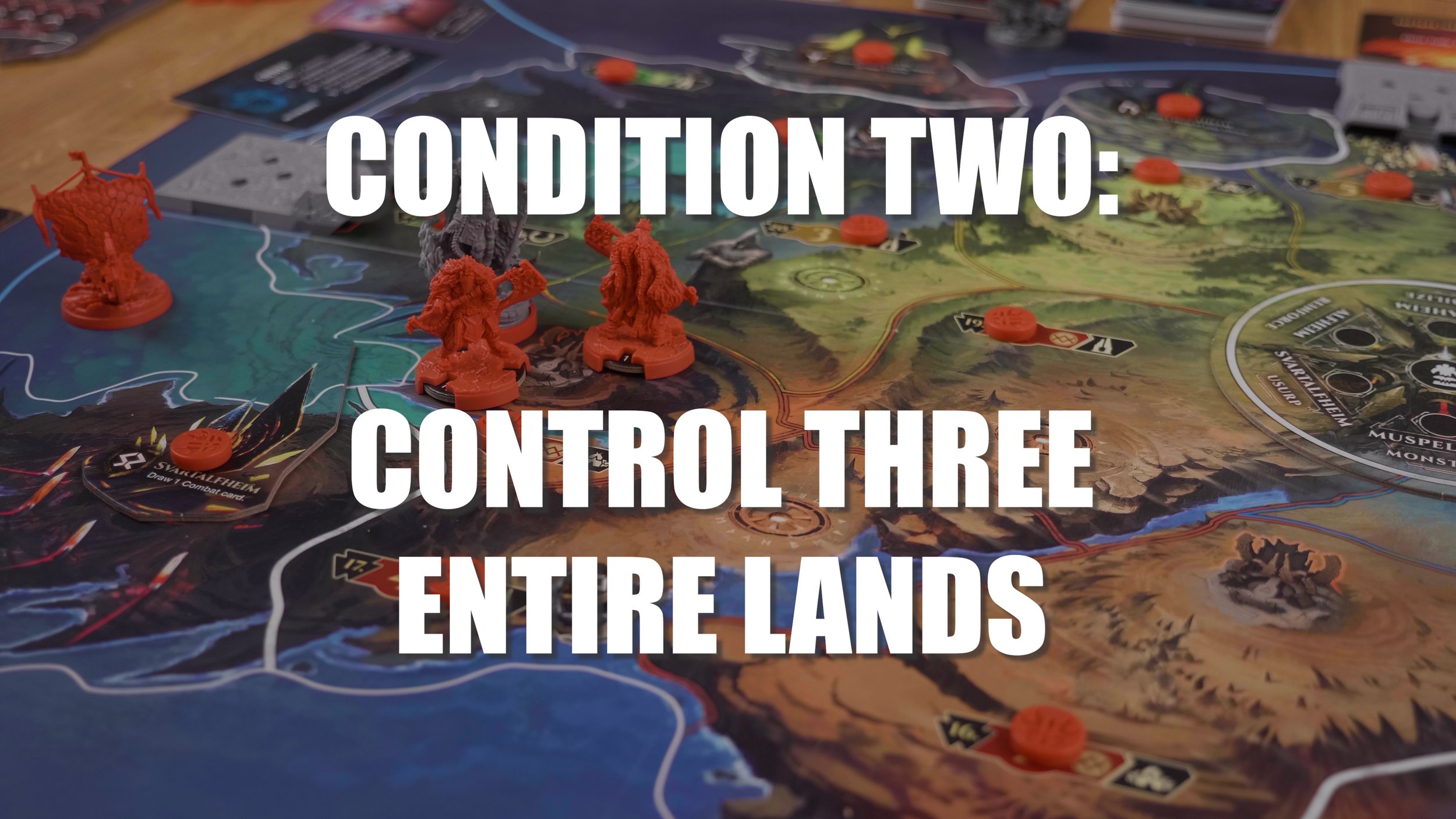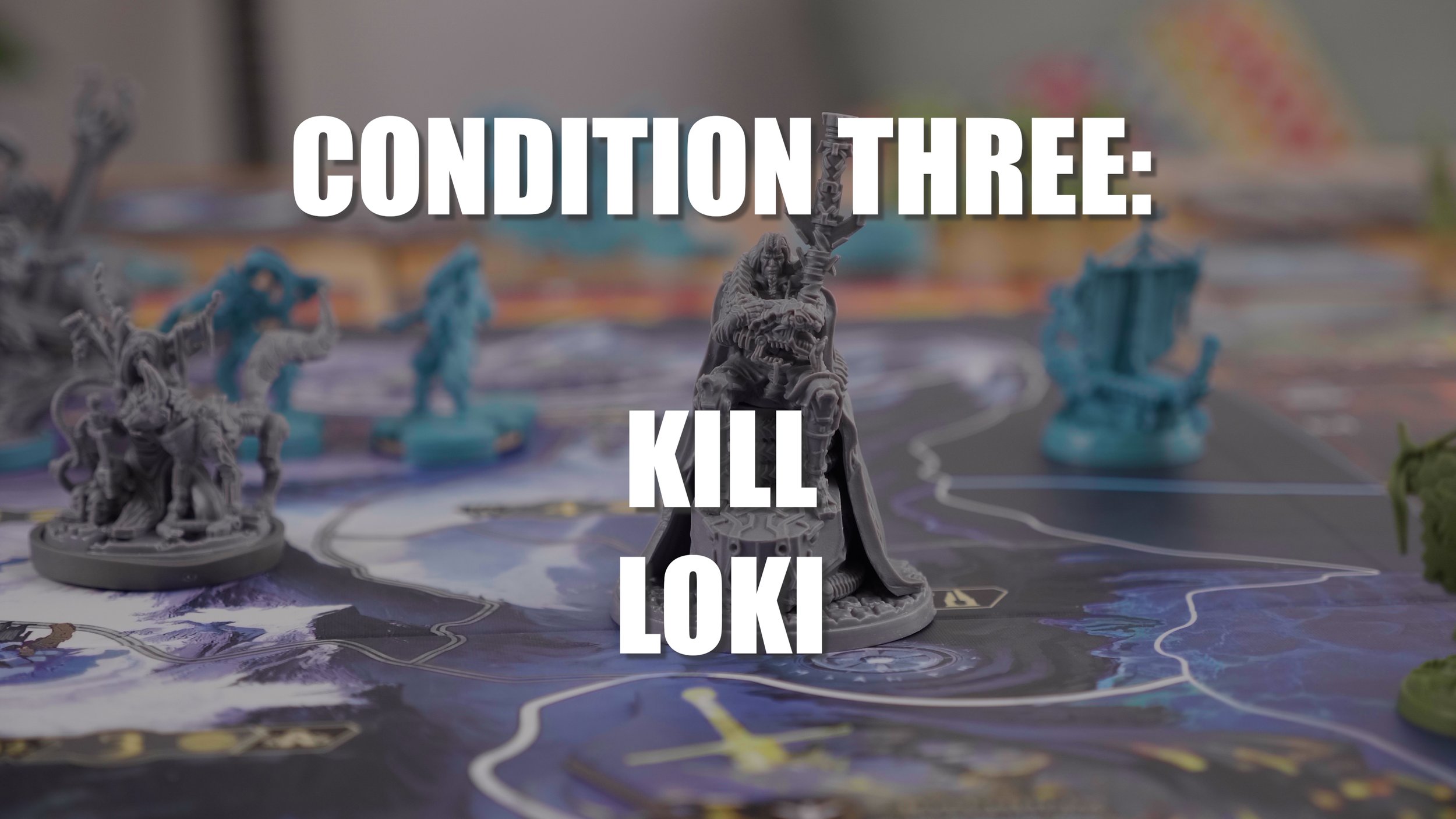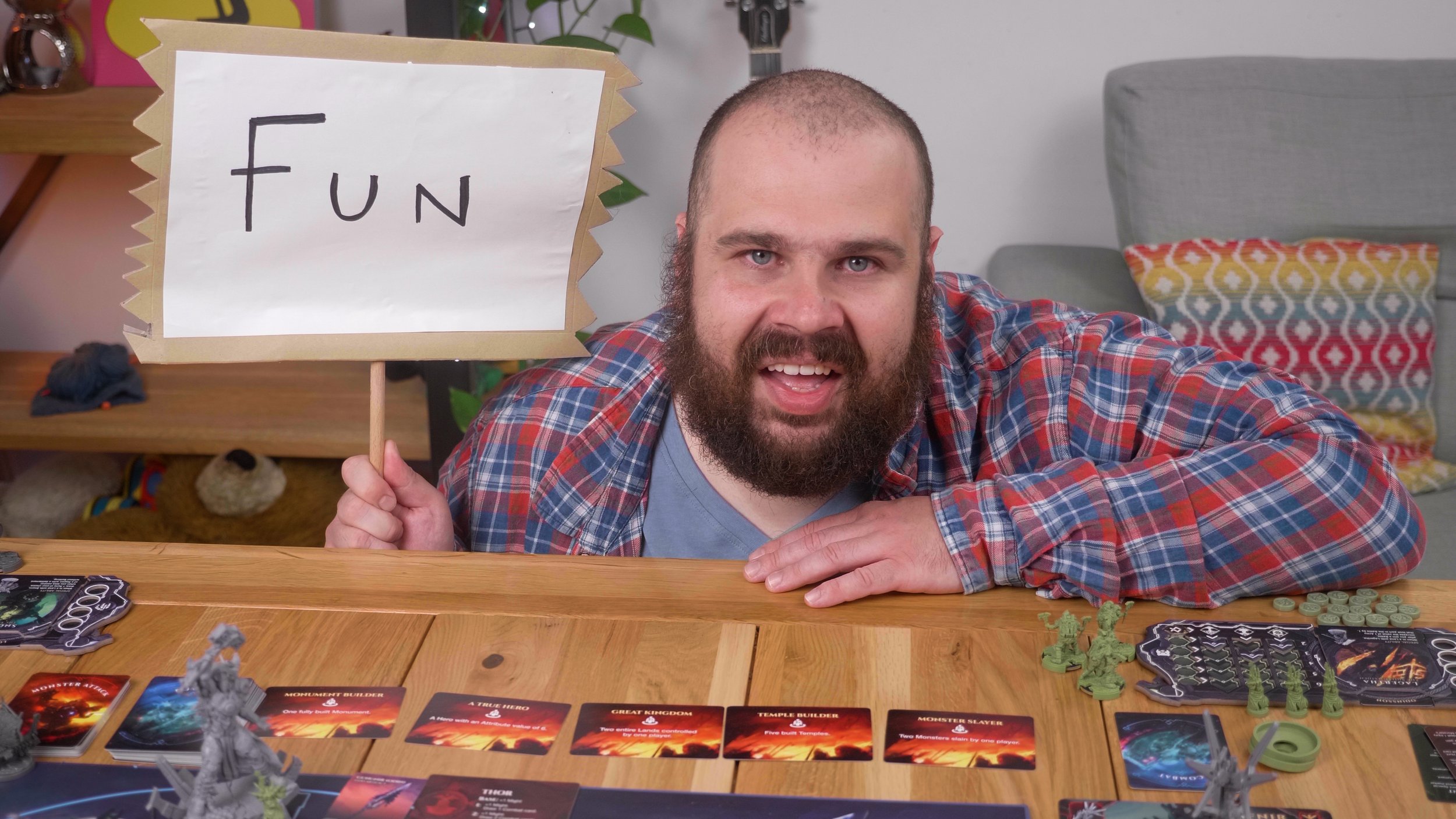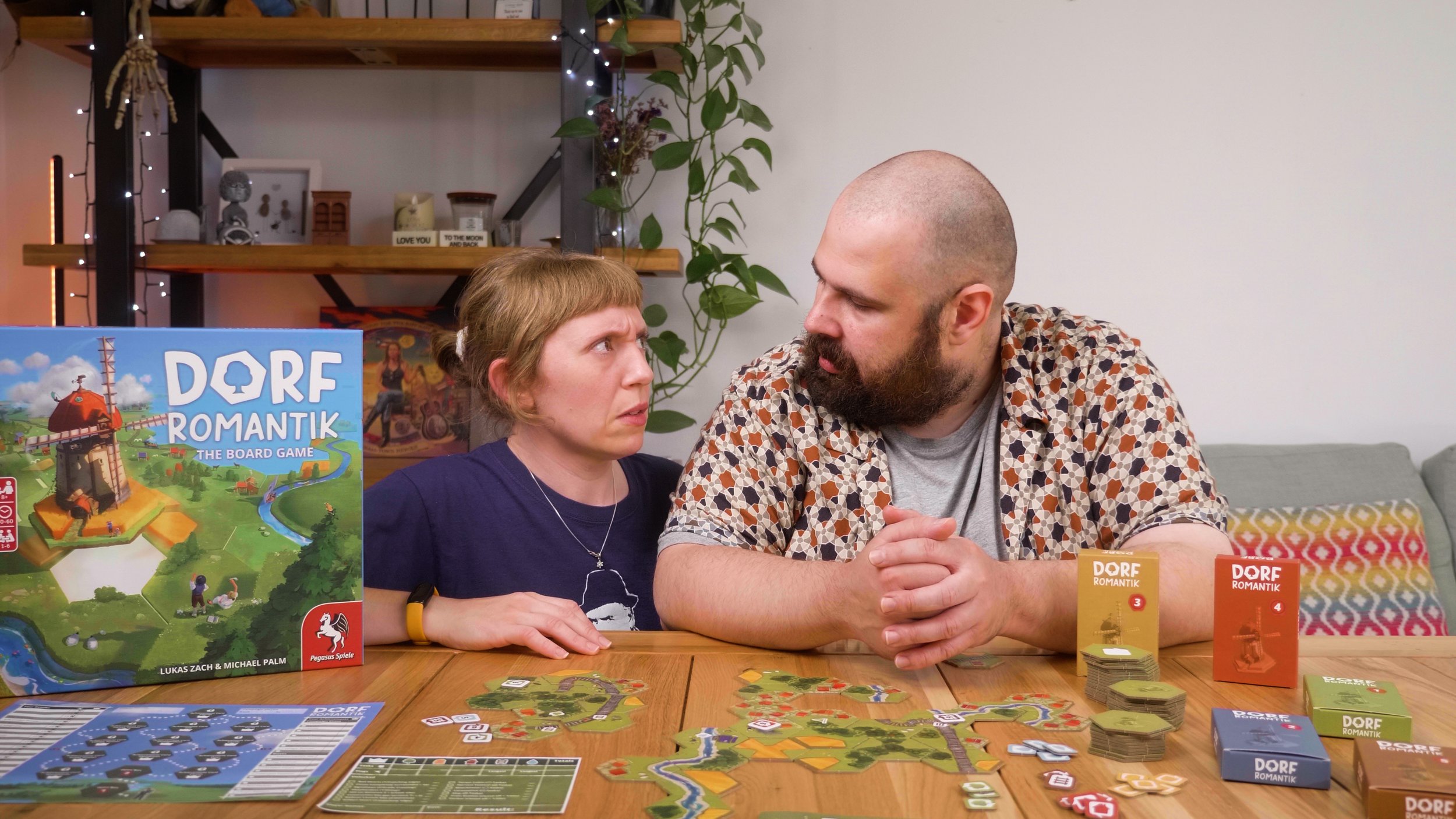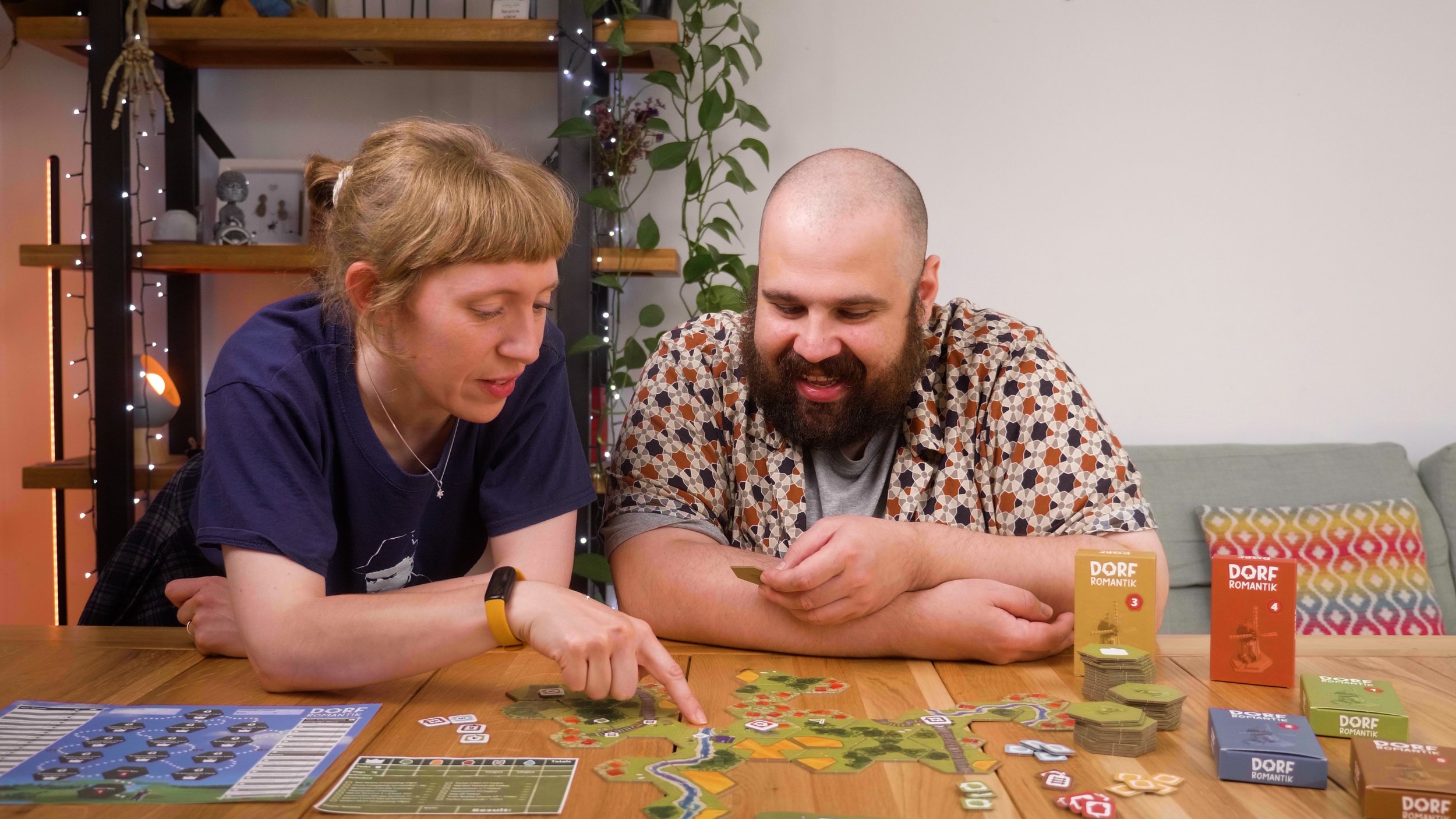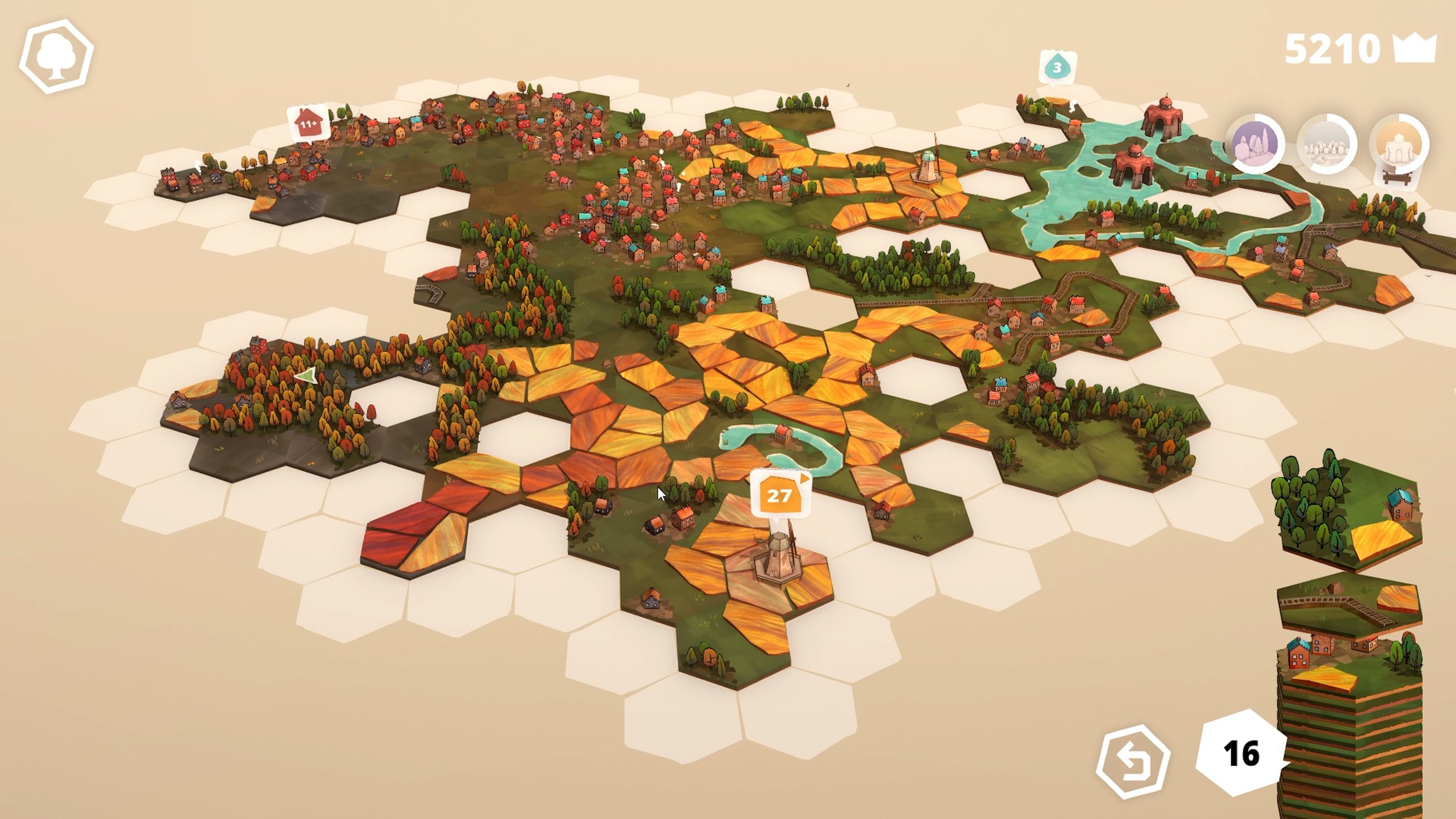Lords of Ragnarok and the Decline of Crowdfunding
I’m not going to mince words, I think we’re entering a new stage in this board game hobby niche thing that we are into - the decline of crowdfunding. Lords of Ragnarok isn’t the first game to drop on our collective lap that’s evidently not very functional, but I think a few more things are happenings.
People are becoming more aware of the dangers of backing big projects, publishers like Awaken Realms have to publish them faster and make more of them to remain sustainable, and then of course, there was the “global event” that made people re-evaluate priorities, and ask themselves harder questions. Questions like: “do I need seven boxes of expensive miniatures that I’m never going to play with?"
This is what today’s episode is about. Sort of. FIrst, I want to show you Lords of Ragnarok, and why exactly it’s a game that simply doesn’t work. Second, I want to talk a little bit about how games end up being like that, and how we should adjust our purchasing habbits.
Below is a transcript of the entire video:
I’ve never seen a board game so confidently shoot itself in the foot and then attempt to run a marathon… is something I said to a reviewer friend of mine when describing Lords of Ragnarok who then said to me
Tom Brewster: That’s a great line
Was that… Elijah Wood? Anyway, I thought, let’s use that line to open the review!... but then I decided it’s a bit cheesy so let me do this instead. In all my time reviewing board games I’ve never ever felt so sure in saying – this is a terrible game.
Tom Brewster: Wait just to be clear, I’m not saying any of this. Cause I never played the game. I don’t want any responsibility in case you’re wrong, - Efka - you know what I’m saying?
OMG grow a backbone Elijah
In Lords of Ragnarok players take on the roles of mythical heroes from Scandinavian folklore,
Lorri, Dorri, Borri, Gorri, Forri and Snorri.
That last one is real, and also a name I used to sleep under. In addition to your hero, you have armies, a ship and some priests. And the big twist is that there’s also future tech, so… ugh… Nordic Lasers? Yeah... sure ok why not.
Not only is Lords of Ragnarok a troops on a map game, a genre where you move armies hoping to control various territories, you know, Risk - but it’s also a sequel to a game that’s moderately well regarded, Greecy Lasers.
With a genre so established and an existing framework, it’s hard to imagine how we got here like that. At worst, I was expecting this game to be mediocre, dull, uninspired. Not busted. So uh, I guess, let’s take a look at how it… works.
The goal of each game is to be the first person to reach one of the three winning conditions.
Nice, clearly signposted territories that we have to fight over. This makes sense.
Lands are these big regions of a single color, and in total three lands are basically half of the board. To achieve this, your opponents would have to be 1) babies, 2) asleep, 3) too busy to pay attention to the game because they’re piloting an aeroplane. Theoretically this is possible. Practically you have nine territories you have to defend, and only six pieces to defend them with.
In every game there is a boss. If you just have the core box – it’s Loki. If you, like me, sadly pledged for… *deep sigh* you have other choices for game bosses.
This one’s going to need more work to untangle, here come some condensed rules.
Let’s contextualize things. The objective of the game is to mostly control territories. But this win condition says – destroy the big dork and you win instead. Which, again, in theory is sound. It’s like political leverage. If you get too many votes I’ll post incriminating deets – that sorta thing.
Naturally, a third of the game’s mechanisms tie around this concept. And a third of the game’s miniatures as well!
You can’t just attempt to defeat Loki, first you need to defeat two other monsters, or partially defeat monsters, I’ll spare you the details.
Fighting either starts a whole mini game of playing combat cards, covering up wound slots, getting rewards.
Is this even a good mechanism? Imagine three people engaged in a fight over territories and one person ignores all of that and plays their own game, which you can’t affect, and then just wins. Is that fun? Well there’s just no way of knowing, sadly, because practically this isn’t doable.
No, really. You can’t do this. First of all, there isn’t enough time to achieve this. I’ll explain why in just a bit. But also, whilst defeating monsters is a moderately fun and marginally rewarding activity – defeating Loki himself is so preposterously hard it might not actually be possible.
As in, I tried defeating him outside of the game by maxing out all my stats and I still couldn’t do it. And don’t take my word for it, according to a review by Charlie Theel on Player Elimination, there was at the time of publishing no known instance of someone being able to achieve this.
Now image me telling you – NONE OF THAT MATTERS. I guess you don’t have to because I just did because it doesn’t. These three win conditions are rendered meaningless because most games of Lords of Ragnarok do not end by someone achieving them.
At some point, the game throws a tantrum, as if upset by your audacity at attempting to enjoy it and just says it’s over now and enacts
This disk is YGGDRASIL and it’s not a territory – it’s the action disk. The weird thing about this game is that what your armies do and what your hero does are sort of separate things.
Armies can move about, fight other armies, control territories, that sort of thing.
Your hero can also take control of a territory but mostly it trundles around the map, collecting resources, building temples, making alliances with neutral factions, fighting monsters.
These are called special actions, and your hero gets to do one each turn by placing a disk on one of the action slots on YGGDRASSIL or take off all disks by building the next part of a giant miniature representing one of the game’s three gods – buff man, buff man, or wisdomous lady.
Are we doing this? Are we still really doing this?
So YGGDRASSIL isn’t really a territory, but if Ragnarok happens, the territories that are adjacent to YGGRADSSIL are the only thing that matter because whoever controls the most of them becomes the winner of the game.
There are five Ragnarok cards, each featuring a condition, like building one of these monument minis or maxing out one of your attributes. If three of these conditions are ever achieved, then Ragnarok is triggered and players have one more round to scramble for the territories near YGGDRASIL.
But note that the original three win conditions are also represented on these Ragnarok cards, but the Ragnarok version is achieved earlier. If for some reason, you’re trying to win by killing Loki, you need to kill two monsters first. But killing two monsters will immediately flip one of the five Ragnarok cards before you can even try to defeat Loki. And other Ragnarok cards, like completing one Monument, sort of just achieve by themselves during the course of play.
Or in other words, for most of the game, three things matter, and thing four doesn’t, but in some plays at the end of the game the three things that mattered stop mattering and the thing that didn’t matter now does.
Which means in 95% of the games trying to achieve the three standard win conditions, including one that has a bunch of mechanisms and miniatures and all kinds of nonsense tied around it, does not matter. Does any of this make any sense to you?
Okay, imagine you’re playing a game of football. Or soccer if you’re American adjacent. You’re on minute 89, it’s nil-nil, for some reason scoring a goal for anyone is impossible. Your coach calls you over, hands you this (picks up a basketball) and says, right I need you to land a three pointer.
And at that moment you realise your entire career was meaningless and now you’re tired, this isn’t worth it, you want to go home.
Our general review philosophy is that we don’t just want to recite the rules for the game, we want to highlight how the game feels. What are the highs, lows, what’s the experience.
But my only experience of Lords of Ragnarok is how its incomprehensible. I mean, I understand the rules. I just don’t understand why these rules are the way they are. What are they doing? What’s the point? And there are cool rules in Lords of Ragnarok, and I deliberately omitted explaining the majority of this game. For example, when you place Loki somewhere, armies can't go into that territory. And that immediatly sounds cool because it's derivative of El Grande. And you think "oh it's the El Grande bit, where you can block a region." But for most of the game, that doesn't matter. Because the other core rules, like the whole idea of the game doesn't function. None of these elements cohere into anything interesting. It's just... pushing miniatures around. For hours. For no reason whatsoever.
That’s just a thing that happens with board games sometimes. Plenty of designers swing wide and, apologies, to extend the sportsball analogy, not every one of them is a home run. But it’s one thing to have a plucky go, and another thing to sell me something that just by the look of it must come with a four wheel drive, leather interior and a six litre engine. This box is just new monsters. A whole box dedicated to a win condition that’s incompletable.
I know we’ve been fairly critical of publisher Awaken Realms in the past, so let me say two things here. First, I promise, next time we cover an Awaken Realms game, it’s gonna be a positive one. Second, I don’t want to make it seem like I think they maliciously designed a bad game. It’s pretty clear that many of these weird mechanisms are design responses to perceived flaws of the Lords of Ragnarok predecessor Lords of Hellas.
But this, this, this, this, this, this and this that all takes time an effort that’s diverted from making just the core rules enjoyable.
There are instances, miracles, where you get five boxes and it’s good. But in most cases, and clearly this case, the publishers don’t leave themselves enough time to actually make the game they’re promising.
So no, I don’t think anyone wanted to make a bad game. But it’s clear that Awaken Realms never figured out how these changes actually play out in practice. That was not their priority. This on the other hand,
And it’s happening more and more and naturally, you could feel frustrated, because you chucked upwards of 250 euros into this thing, depending on whatever options you selected in the crowdfunding campaign.
But to be brutally honest, of course they’ll do that. That is their literal business model, make big boxes with lots of extra boxes, and to sustain growth they need to make even more big boxes with extra boxes FASTER. And they’ll keep doing it and they’ll keep cutting corners as long as you keep buying them.
In isolation, Lords of Ragnarok is an emporium of mistakes. In context, it’s a symptom that this whole “crowdfund a Dubai sized board game” gimmick is unsustainable and will eventually stop producing games that are playable. And you can upend it, by either not backing these projects, or, only backing just the core box.
Fight with your wallet, not with angry comments. If you leave an angry comment, or just a displeased one, you’re just opening the door for a WE HEAR YOU. Whereas if your wallet says “I want less boxes and more game” that actually forces them to rethink their business model.
If you want an alternative recommendation for cool troops on a map game, Kemet is still good, Ankh is the big many box experience that’s somehow actually great and Inis is a neat example of what if this genre but WEIRD.
Whereas Lords of Ragnarok has as much credibility as a floating carrier bag trying to pass as a seagull. It rams every ounce of this box with high street chic and doesn’t stop itself to think why.




